Em junho de 2015, o governo anunciou sua política de acelerar os esforços de recuperação para cancelar as instruções de evacuação enviadas a todas as zonas, com exceção das zonas de difícil retorno em março de 2017, e permitir que os residentes retornem às suas casas. A migração de volta aos lares está gradualmente começando.
Atualmente, essas áreas (371 km 2) ocupam 2.7% das áreas da Prefeitura de Fukushima (13,783km2).
11 de março de 2011
12 de março de 2011
22 de abril de 2011
|  |


| Áreas designadas de acordo com os níveis de radiação. | Entrada restrita por barreiras físicas (exemplo: barricadas) | Pontos de entrada e propósitos de entrada | |||||
|---|---|---|---|---|---|---|---|
| Por tráfego via Estrada Principal | Retorno temporário de Residentes | Entrada para Utilidades Públicas | Entrada para trabalho ou atividades relacionadas permitidas na área | Pernoite na área. | |||
 Área de retorno difícil Área de retorno difícil (Área de acesso restrito) | Sim |  (Observação 1,Observação 2) |  (Observação 1) |  (Observação 1) |  (Observação 1) |  | |
 Zona de Habitação Restrita Zona de Habitação Restrita | Não |  |  |  |  |  (Observação 3) | |
 Zona de preparação para revogação da zona de evacuação Zona de preparação para revogação da zona de evacuação | Não |  |  |  |  |  (Observação 3) | |
Área de retorno difícil (Área de acesso restrito)Área em que a dose cumulativa estimada da taxa de dosagem aérea não pode ser menor que 20 mSv, mesmo passados 6 anos após o desastre nuclear. (Área em que a dose estimada cumulativa anual excedeu 50 mSv em março de 2012)
Zona de Habitação RestritaÁrea em que a dose cumulativa anual estimada nas taxas do ar tenha sido confirmada acima de 20 mSv (março de 2012).
Zona de preparação para revogação da zona de evacuação Área em que a dose anual cumulativa estimada das taxas do ar foram confirmadas como sendo menores que 20 mSv (março de 2012).
As diretivas de evacuação previamente emitidas ainda continuam em todas as três áreas, e nas "zonas de difícil retorno" a entrada é restrita por barreiras físicas (exemplo: barricadas).
Na "zona de habitação restrita" e nas "zonas preparatórias para revogação de ordem de evacuação", a entrada é restrita para todos os que não são autorizados, apesar de não haver restrição de entrada durante o dia.
(Observação 1) pode ser implementado quando o prefeito do município aprovar, etc.
(Observação 2): para algumas rodovias principais, os viajantes não precisam mostrar seus passes.
(Observação 3) Há um sistema que permite exceções, como um pernoite em "casos especiais", ou"ao se preparar para voltar para casa".

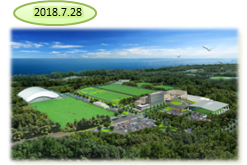 | J-Village which was suspended due to the nuclear accident, partially restarted its operation on July 28, 2018.The prefectural government will make use of J-Village as a symbol of revitalization to centralize and promote soccer and other sports as well as work to stop the spread of harmful-rumors generated in the wake of the nuclear disaster. J-Village will be an important platform from which the prefecture will be able to show the rest of Japan and the world its strong progress towards revitalization. |
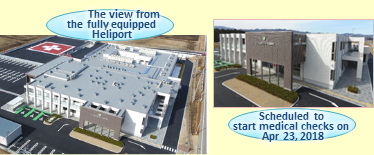 | In April, 2018, a hospital affiliated to Fukushima Prefectural Futaba Medical Center opened in Tomioka Town. The hospital provides 24/7/365 emergency medical services and will facilitate home medical checks and nursing care upon request from regional medical institutions. |
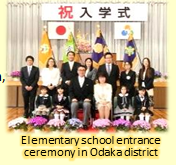 | Due to the aftermath of the nuclear power accident, Odaka districtof Minamisoma City and Naraha Town were forced to run elementary and junior high schools in Kashima district and Iwaki City respectively. In 2017, they returned to their towns and resumed school operations for the first time in six years. In April 2018 local schools are set to resume in the five municipalities:Yamakiya district in Kawamata Town, Tomioka Town, Namie Town, Katsurao Village and Iitate Village. The prefectural, municipal and national governments are united in their efforts to continue positive school development. . |
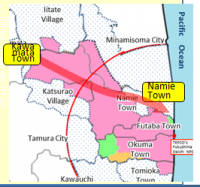 | On September 20, the previously closed Route 114 was re-opened to vehicle traffic. Route 114 runs for approximately 27km between Tsushima and Muroharain Namie Town. As this is a main road connecting Fukushima City with Namie Town, it is expected that it will make things more convenient for residents in Namie Town and adjacent municipalities as an evacuation route as well as a route for transportation of emergency goods and pesonnelin the event of a disaster. It's re-opening is expected to further accelerate restoration and reconstruction projects. |
| Commercial facilities which will support the reconstruction were opened in Yamakiya district, Kawamata Town and Iitate Village. These facilities aim to support the livelihoods of returnees, with retailers providing daily commodities, food, and places to eat. 'Tonya no Sato' or 'Home of Wholesalers' has an area devoted to providing information on the reconstruction efforts as well as a multi-purpose square. Madei Hall is a place where residents can meet and relax. Flowers are grown, displayed and sold in the building adding to the relaxed vibrant atmosphere. |
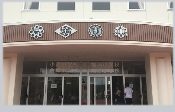 | Due to the aftermath of the nuclear power accident, Odaka district, Minami-Soma City and Naraha Town were forced to run elementary and junior high schools in Kashima district and Iwaki City respectively. This year, they returned to their towns and resumed school operations for the first time in six years. Five Municipalities (Kawamata Town, Yamakiya district, Tomioka Town, Namie Town, Katsurao Village and Iitate Village) are aiming to resume school operations in their hometowns. The prefectural government, municipalities and national government will continue to work together to form attractive schools. |
 | On June 7, 2017, a ceremony to pray for the safety of construction and groundbreaking took place at the Futaba Medical Center (tentative name). We secured 24/7/365 emergency medical services and secondary emergency medical services including medical services to support resumption of home medical services that are required in the Futaba area and support "environment where local residents can work with peace of mind", "environment where people engaged in the revitalization projects can work with a sense of security", and "environment where companies can do businesses with security" from the medical aspect. Futaba Medical Center (tentative name) is expected to open in April, 2018. |
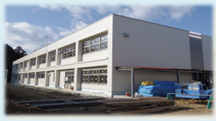 | In April 2017, Odaka Commerce High School will merge with Odaka Technology High School, as Odaka Industrial Technology and Commerce High School opens in Odaka, Minamisoma. It will train personnel who can contribute to regional reconstruction and the Fukushima Innovation Coast Framework. |
 | On October 27, 2016, "Machi Nami Marche" was opened, and later on November 25, "Sakura Mall Tomioka" was opened. The openings were expected to improve convenience of residents returning home, in the perspective of lifting of evacuation orders in the future. |
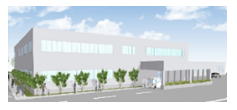 | The Prefectural Government will develop (tentative name) Futaba Medical Center in Ozukadistrict, Tomioka Town, in order to secure medical care necessary for the region including the secondary emergency medical care in Futaba county, and support an environment where residents and people engaged in revitalization projects can live and work with peace of mind, from a medical aspect. (scheduled to open in April, 2018) |
| Fukushima Prefectural Government is addressing the recovery of J-Village which is under suspension due to the disaster. We are planning not only to restore the pre-disaster condition but also build a more attractive facility. For that, we are developing a new accommodation building with all weather training field in a scale of the whole soccer ground to partially resume the operation in summer of 2018 and fully resume in April, 2019. In 2020 Tokyo Olympic games, J-Village will be a training camp for representatives of Japanese male and female soccer players. We are reconstructing a new J-Village which will gain popularity among people as a symbol of revitalization of the prefecture. |
| On July 12, 2016, JR Joban Line resumed operation between Haranomachiand OdakaStation following the lifting of evacuation orders to MinamisomaCity. Many passengers took the train. In front of OdakaStation, a ceremony to pledge revitalization was organized by MinamisomaCity. JR Joban Line is expected to resume full lines by the end of March 2020. |
| On March 15, 2016, a commercial complex "Shopping Center YO-TASHI" was opened in KawauchiVillage, housing Family Mart Kawauchithat sells fresh food, a pharmacy, a cleaning store, and restaurants. There is a community space available for exchanges between villagers. This is expected to facilitate residents' return and revitalization as well as recovery of the community after their return. |
| On March 30, 2016, a completion ceremony was held for a test facility of the NarahaRemote Technology Development Center constructed by the Japan Atomic Energy Agency (JAEA). The facility is equipped with a mock-up of a part of a nuclear reactor containment vessel, and serves as a hub of decommissioning research by TEPCO. Full operation started from April. |
 | On Feb 1, 2016, the new clinic is established in NarahaTown in order to help the recovery of Futaba County and develop an environment for the return of residents. |
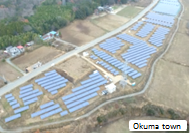 | Okuma Town FurusatoRevitalization Mega Sola Power Plant was completed in Okawaradistrict which is a hub of reconstruction for Okuma Town, and started operation from December 18, 2015. Annual output is about 2,200MWh that covers power consumption by about 600 households. Part of sales revenue of electricity is being used for the operation of plant factory to be constructed in Okawaradistrict by Okuma Town. |
 | The home newly established and opened in KawauchiVillage on 1 November, 2015 has 80 beds available |
 | On April 8, 2015, a new public school opened as a 6-year secondary education school in HironoTown. The school is aimed to become a symbol of revitalization of the prefecture through its own curriculum to grow human resources who will contribute to global and future society. |